I don't really understand what is meant by "mixing in some of the opposite channel." How do you do that with two speakers?... The main point I'm getting at is that you can expand the soundstage of any stereo pair by mixing in some of the opposite channel (with phase reversed).
...
If you look at the circuit (referred to by the article I linked to) presented here:I don't really understand what is meant by "mixing in some of the opposite channel." How do you do that with two speakers?
http://elias.altervista.org/html/SingleSpeakerStereo.html
you'll see a simple way of achieving what I'm talking about, by adding a centre speaker. You can use this to demonstrate the principle, if you have a third (centre) speaker to hand. If you find that the soundstage extends beyond the main speakers satisfactorily (bearing in mind the fact that this arrangement is far from optimal), you can improve on the simple circuit using slightly more sophisticated and flexible circuitry (which could be explored here).
The point is that you add a proportion of reverse-phase Left to the Right channel, and vice versa. This will probably create a "hole in the middle", which you fill in by adding a centre speaker fed with an amount of combined Left plus Right channels.
OK. I see what he has done. But frankly it is a lot more work than I care to do.If you look at the circuit (referred to by the article I linked to) presented here:
http://elias.altervista.org/html/SingleSpeakerStereo.html
you'll see a simple way of achieving what I'm talking about, by adding a centre speaker. You can use this to demonstrate the principle, if you have a third (centre) speaker to hand. If you find that the soundstage extends beyond the main speakers satisfactorily (bearing in mind the fact that this arrangement is far from optimal), you can improve on the simple circuit using slightly more sophisticated and flexible circuitry (which could be explored here).
The point is that you add a proportion of reverse-phase Left to the Right channel, and vice versa. This will probably create a "hole in the middle", which you fill in by adding a centre speaker fed with an amount of combined Left plus Right channels.
Also, I seriously doubt that those MA CHR-70 drivers are going to provide sound quality anywhere near the SB Acoustics drivers that I use now. Increasing the sound stage is desirable, but not at the cost of compromising the sound quality itself.
Thanks for the suggestion, but I'll pass on this one.
Classicalfan, Ive seen that from you several times now ‘a lot more work than I care to do’ …… I myself really enjoy messing around with different scenario/setups of a system, if all else one can learn what doesn’t work!
I reckon you may be stuck with the ‘lazy man’s soundstage’ if you don’t want to put in the effort. 🙂
I reckon you may be stuck with the ‘lazy man’s soundstage’ if you don’t want to put in the effort. 🙂
OK. I see what he has done. But frankly it is a lot more work than I care to do.
Also, I seriously doubt that those MA CHR-70 drivers are going to provide sound quality anywhere near the SB Acoustics drivers that I use now. Increasing the sound stage is desirable, but not at the cost of compromising the sound quality itself.
Thanks for the suggestion, but I'll pass on this one.
I wasn't suggesting you should follow any implementation in the article - I cited it only to illustrate a point. Obviously a bad idea...
I’m glad that you enjoy “messing around with different scenario/setups of a system”, but please accept the fact that not everyone shares your enthusiasm for it. I certainly don’t enjoy “messing around” like you do.Classicalfan, Ive seen that from you several times now ‘a lot more work than I care to do’ …… I myself really enjoy messing around with different scenario/setups of a system, if all else one can learn what doesn’t work!
I reckon you may be stuck with the ‘lazy man’s soundstage’ if you don’t want to put in the effort. 🙂
And while I’m certainly willing to try new things it’s only after a pretty high probability that they will satisfy me. I’m not interested in experimenting just to learn about things.
So, what you might think of as “lazy” I consider to be just the opposite and instead is a judicious use of my time.
Finally, I've never said that I am unhappy with what I have now. To the contrary, I like what I have very much. My only point has been to make the sound stage somewhat bigger, if possible, without compromising the current sound quality.
And your point is apparently that by designing a speaker with three drivers, one in the middle pointing directly into the room and one on either side pointing to the right and left, you can create a speaker that provides a wide sound stage.I wasn't suggesting you should follow any implementation in the article - I cited it only to illustrate a point. Obviously a bad idea...
Fine. That may be true, but for me to create such a speaker and to design the necessary crossovers is way, way beyond my capabilities or interests.
So again, thank you for the suggestion. I just don’t understand why you are offended when I dismiss the idea as not being of any interest to me.
I think you missed Keith's point. He's right though, about making the soundstage appear larger with the tricks he mentioned.
No need for other speakers. It was known in the 30's when they invented it....
See: https://www.audiosignal.co.uk/Resources/Stereo_shuffling_A4.pdf
No need for other speakers. It was known in the 30's when they invented it....
See: https://www.audiosignal.co.uk/Resources/Stereo_shuffling_A4.pdf
I thought that I understood what Keith wrote, but maybe I did miss his point. If so, what was it that I missed?I think you missed Keith's point. He's right though, about making the soundstage appear larger with the tricks he mentioned.
No need for other speakers. It was known in the 30's when they invented it....
See: https://www.audiosignal.co.uk/Resources/Stereo_shuffling_A4.pdf
No, that's wrong! As I said, it was clearly a bad idea to use that example, as it led to your misunderstanding.And your point is apparently that by designing a speaker with three drivers, one in the middle pointing directly into the room and one on either side pointing to the right and left, you can create a speaker that provides a wide sound stage.
Fine. That may be true, but for me to create such a speaker and to design the necessary crossovers is way, way beyond my capabilities or interests.
So again, thank you for the suggestion. I just don’t understand why you are offended when I dismiss the idea as not being of any interest to me.
I'm not so much offended as somewhat irritated that someone doesn't seem to grasp what I've been saying.
classicalfan, if you use a digital source like a PC or laptop, there should be an option to add a bit of processing, just as an experiment.
One thing one could try is add a bit of mid/side processing. The most simple version would be a slight boost of the
side levels. That will introduce a bit of what Keith was talking about:
If stereo is dissected into what is common (mid) and what is different (side) (mid/side processing), and one adds a bit of that difference, you also add a touch of an inverted opposite channel into the left and right channels. There are a lot of plugins that could do such a trick. Most EQ plugins will have it available but there's some simple free plugins that can do it too.
One of the simplest ways, if you use Windows, would be to use Voxengo's MSED plugin, https://www.voxengo.com/product/msed/
One needs to be able to load the plugin, that could be a bottleneck. A free trial of a music player app should be able to do so, for instance: JRiver Media Player.
But surely more members here can suggest other players that can handle VST plugins like MSED.
By boosting the sides channel by about 3 dB you should notice a clear difference.

(just up the side gain by 3 dB)
Simple enough to test. Should you be on a Mac, I'll let others advise you about software to use to be able to do this.
Just use your trusted equipment, only temporarily change the way you play back your music.
That should be doable, right? Even when on a Mac or other OS, I'm sure our members here can find/suggest similar solutions..
At least this should answer your question:
One thing one could try is add a bit of mid/side processing. The most simple version would be a slight boost of the
side levels. That will introduce a bit of what Keith was talking about:
I wonder if the one-box example put you off? The main point I'm getting at is that you can expand the soundstage of any stereo pair by mixing in some of the opposite channel (with phase reversed).
If stereo is dissected into what is common (mid) and what is different (side) (mid/side processing), and one adds a bit of that difference, you also add a touch of an inverted opposite channel into the left and right channels. There are a lot of plugins that could do such a trick. Most EQ plugins will have it available but there's some simple free plugins that can do it too.
One of the simplest ways, if you use Windows, would be to use Voxengo's MSED plugin, https://www.voxengo.com/product/msed/
One needs to be able to load the plugin, that could be a bottleneck. A free trial of a music player app should be able to do so, for instance: JRiver Media Player.
But surely more members here can suggest other players that can handle VST plugins like MSED.
By boosting the sides channel by about 3 dB you should notice a clear difference.

(just up the side gain by 3 dB)
Simple enough to test. Should you be on a Mac, I'll let others advise you about software to use to be able to do this.
Just use your trusted equipment, only temporarily change the way you play back your music.
That should be doable, right? Even when on a Mac or other OS, I'm sure our members here can find/suggest similar solutions..
At least this should answer your question:
I don't really understand what is meant by "mixing in some of the opposite channel." How do you do that with two speakers?
Last edited:
Unless one learns one never knows do they?I’m glad that you enjoy “messing around with different scenario/setups of a system”, but please accept the fact that not everyone shares your enthusiasm for it. I certainly don’t enjoy “messing around” like you do.
And while I’m certainly willing to try new things it’s only after a pretty high probability that they will satisfy me. I’m not interested in experimenting just to learn about things.
So, what you might think of as “lazy” I consider to be just the opposite and instead is a judicious use of my time.
Finally, I've never said that I am unhappy with what I have now. To the contrary, I like what I have very much. My only point has been to make the sound stage somewhat bigger, if possible, without compromising the current sound quality.
Sorry, maybe ‘lazy‘ was a bit derogatory…….seems more like closed mindedness at work here, I mean you are asking for help and then dismissing the suggestions from those that actually do know as if you already know better!?
Talk about a judicious use of time.🙄
Digital media to create a soundstage is something that "pure blood" audiophiles will never do ! 🙄 I'm with classicfan here. 😉
Funny, cause that's exactly what the mastering studio does before you get the "pure blood" track....Digital media to create a soundstage is something that "pure blood" audiophiles will never do ! 🙄 I'm with classicfan here. 😉
...that heaven forbid we don't contaminate, by trying some of the same things the studio did. Lol
Digital media to create a soundstage is something that "pure blood" audiophiles will never do ! 🙄 I'm with classicfan here. 😉
Are you sure you're level with classicalfan on this?
I based my post on info like this:
Well, this is interesting. I have been using web site based audio streaming. A combination of various radio stations that stream classical music, KUSC in the US for example, and a dedicated service such as Classic FM Opera from the Netherlands.
Sounds like a digital source to me... 🤔
I thought that I made it clear in Post #967 that to design the type of speaker you were suggesting is way beyond my capabilities. I don't know why that should either offended or irritate you. It certainly wasn't meant to. And I do appreciate the input regardless of whether I pursue it or not.No, that's wrong! As I said, it was clearly a bad idea to use that example, as it led to your misunderstanding.
I'm not so much offended as somewhat irritated that someone doesn't seem to grasp what I've been saying.
Thanks for the suggestion, but I don't use a PC in my system. Don't even have one in my listening room. My sources are CD player and Internet Streaming services.classicalfan, if you use a digital source like a PC or laptop, there should be an option to add a bit of processing, just as an experiment.
One thing one could try is add a bit of mid/side processing. The most simple version would be a slight boost of the
side levels. That will introduce a bit of what Keith was talking about:
If stereo is dissected into what is common (mid) and what is different (side) (mid/side processing), and one adds a bit of that difference, you also add a touch of an inverted opposite channel into the left and right channels. There are a lot of plugins that could do such a trick. Most EQ plugins will have it available but there's some simple free plugins that can do it too.
One of the simplest ways, if you use Windows, would be to use Voxengo's MSED plugin, https://www.voxengo.com/product/msed/
One needs to be able to load the plugin, that could be a bottleneck. A free trial of a music player app should be able to do so, for instance: JRiver Media Player.
But surely more members here can suggest other players that can handle VST plugins like MSED.
By boosting the sides channel by about 3 dB you should notice a clear difference.

(just up the side gain by 3 dB)
Simple enough to test. Should you be on a Mac, I'll let others advise you about software to use to be able to do this.
Just use your trusted equipment, only temporarily change the way you play back your music.
That should be doable, right? Even when on a Mac or other OS, I'm sure our members here can find/suggest similar solutions..
At least this should answer your question:
It's that for me the true sound stage is analog, and I perceive it mainly in vinyl that was pressed before the advent of digital recordings, be they copies/remasters/etc.Funny, cause that's exactly what the mastering studio does before you get the "pure blood" track....
...that heaven forbid we don't contaminate, by trying some of the same things the studio did. Lol
the secret is
in the original sound recording, the location of the microphones, etc.
when they are direct to vinyl recordings, (see attached) wow, you have musical nirvana in all its dimensions. Of course, all this is part of the past, now there is the "loudness war" so that everything is even and loud while young people listen to music on the subway or walking down the street.. Real crap, sorry, but look the presentation of this LP, I don't remember how much money it cost me, but one thing is for sure, it was well spent. Any similarity to the miserable presentation of a commercial CDA, or worse, streaming music? Oh come on, to me, this isn't progress, it's artistic decadence, and I'm not sure it's technological "advancement." I suppose that sometimes they have wanted to know some relevant information about the artist when they listen on SPTFY or TDL, well, why do you want to know so much? Curiosity kills the man! It is common to find the recording date as the day the application added the song to the list! Sorry about the OT.
Attachments
-
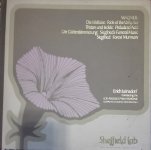 IMG_20220404_161103.jpg285.4 KB · Views: 64
IMG_20220404_161103.jpg285.4 KB · Views: 64 -
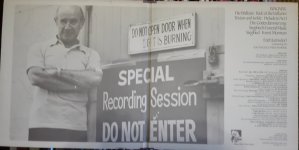 IMG_20220404_161122.jpg165.5 KB · Views: 62
IMG_20220404_161122.jpg165.5 KB · Views: 62 -
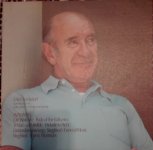 IMG_20220404_161213.jpg239.1 KB · Views: 62
IMG_20220404_161213.jpg239.1 KB · Views: 62 -
 IMG_20220404_161307.jpg217.4 KB · Views: 63
IMG_20220404_161307.jpg217.4 KB · Views: 63 -
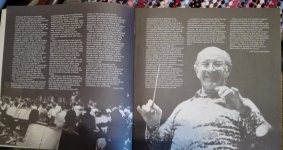 IMG_20220404_161332.jpg320.4 KB · Views: 57
IMG_20220404_161332.jpg320.4 KB · Views: 57 -
 IMG_20220404_161339.jpg374.4 KB · Views: 69
IMG_20220404_161339.jpg374.4 KB · Views: 69 -
 IMG_20220404_161354.jpg178.8 KB · Views: 63
IMG_20220404_161354.jpg178.8 KB · Views: 63 -
 IMG_20220404_161453.jpg275.6 KB · Views: 64
IMG_20220404_161453.jpg275.6 KB · Views: 64 -
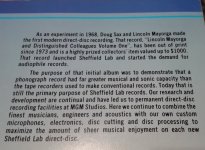 IMG_20220404_162149.jpg366.9 KB · Views: 60
IMG_20220404_162149.jpg366.9 KB · Views: 60
OK - sorry I was so abrupt. The thing is, all I had in mind was for you to use your existing setup, with some additional circuitry, but which probably would need a third speaker (preferably another Piccolo) in the centre. And if you had another speaker to hand, you could get an idea of the effect simply by connecting the 3 speakers in a certain way (shown in the linked article) - before committing to building a third Piccolo plus additional circuitry.I thought that I made it clear in Post #967 that to design the type of speaker you were suggesting is way beyond my capabilities. I don't know why that should either offended or irritate you. It certainly wasn't meant to. And I do appreciate the input regardless of whether I pursue it or not.
Since you said you are willing to go to the lengths of changing speakers or amplifier, the above seemed to me to be acceptable in terms of outlay and work (I'm presuming the Denon has a spare amplifier channel for the extra speaker).
Of course, the addition of a centre speaker may be unacceptable...
PS: wesayso's advice is worth looking into as well.
Unless one learns one never knows do they?
...🙄
And there are a lot of ways of learning. You can do your own experiments or benefit from the experience of others who have already done them and reported on it.
Moreover, some of those experiments done by others may very well be things that you would never think of and would therefore miss completely.
I don't have a problem with learning from what other people have done and reported on. Particularly if they are more qualified than I am to do the experiments to begin with.
Again, you can call that laziness it you like. I call it just plain common sense.
- Home
- Loudspeakers
- Multi-Way
- New Speakers or New Amplifier to Increase Sound Stage